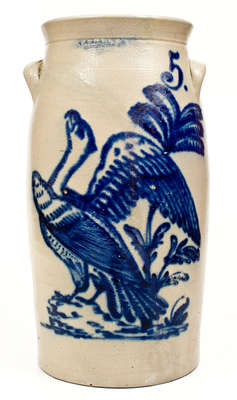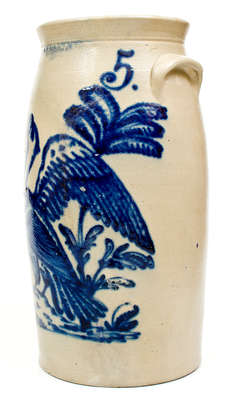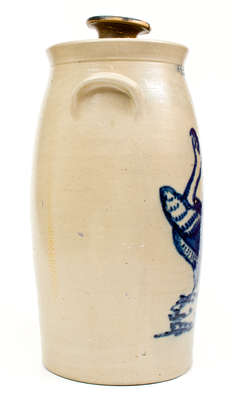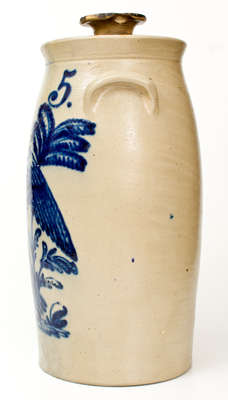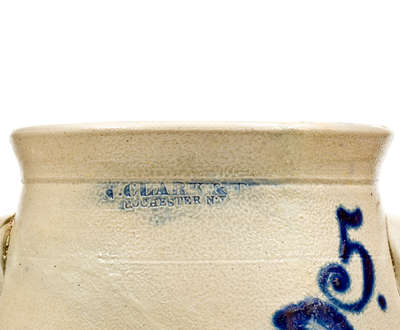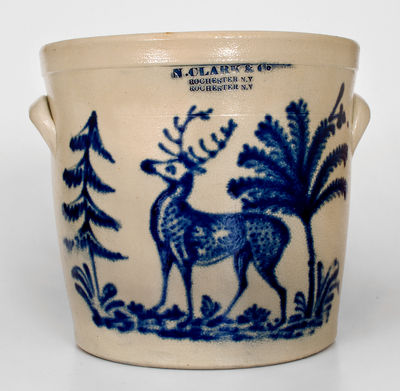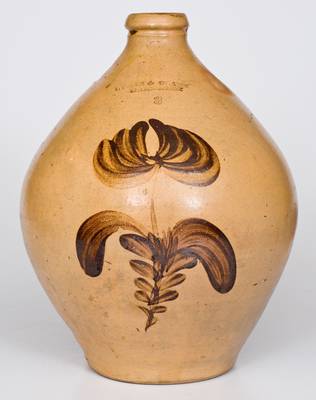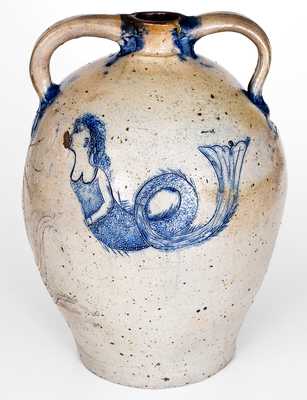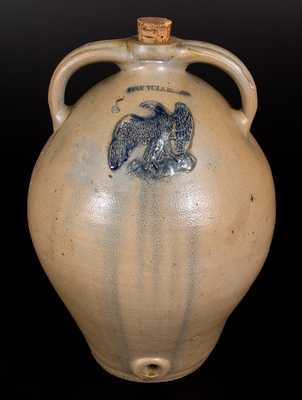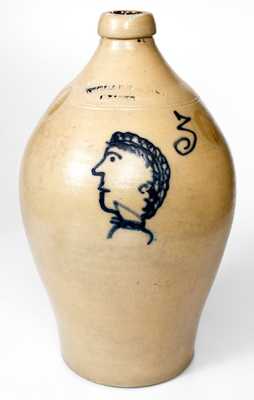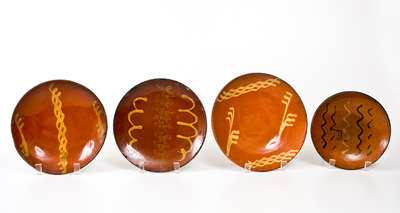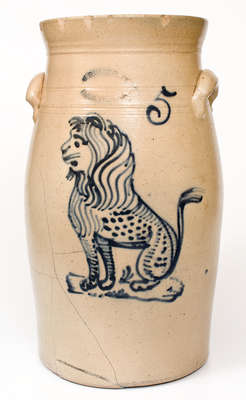Extraordinary Five-Gallon Stoneware Churn with Elaborate Cobalt "Phoenix Bird" Scene, Stamped "N. CLARK & CO. / ROCHESTER N.Y," circa 1839-1851, semi-ovoid churn with flared collar and applied lug handles, decorated with a painterly, slip-trailed design of a long-necked bird with raised head, open mouth, and spread wings, standing on a mound of earth in front of a large, palm-like tree. Particular attention is taken to the bird's feathers, its wings represented with an anatomical accuracy uncommon in American stoneware decoration. Slip-trailed "5." to shoulder and cobalt highlights to maker's mark. One of only a few Rochester-made pieces depicting this design known, this masterwork typifies the artistry and extravagance of the city's stoneware craft. Aspects of the design indicate it was executed by John Burger, viewed today as the greatest stoneware decorator in 19th century America, a French-born potter who would eventually take ownership of Clark's concern in 1854. The image, referred to among collectors as a "phoenix bird," may represent an eagle or other bird of prey. As the Rochester parrot-with-cherry motif is clearly based on natural history prints of the period, this design may also be copied from a printed image that Burger had access to. The depiction of the bird in grand scale, imbued with a sense of vitality and motion, and part of a larger, naturalistic scene, may be viewed as a direct response to the work of John James Audubon, who completed his famous Birds of America in 1838. Measuring 13 1/4" tall x 11" wide around the curve of the vessel, the decoration is nearly unprecedented in American stoneware in terms of its detail, color, size, and artistic value. Includes Albany-glazed lid. A large, restored Y-shaped crack emanating from the base on front through decoration. The crack forms the Y at the top of the bird's right wing. One part of this crack curves to the left above the bird's head and stops at the churn's handle. The other part of this crack continues through the left branches of the tree to the rim. A short, thin crack extends off from this restoration through the number "5." A faint 4" X-shaped surface line to left of bird, not visible on interior. A faint 6" X-shaped surface line to right of bird. An approximately 5 1/2" X-shaped line to base area on reverse, emanating from a tiny surface chip. A small chip and minor nick to inner rim for lid. Lid with large chips, flakes to underside, and hairlines. H (excluding lid) 18 7/8".

